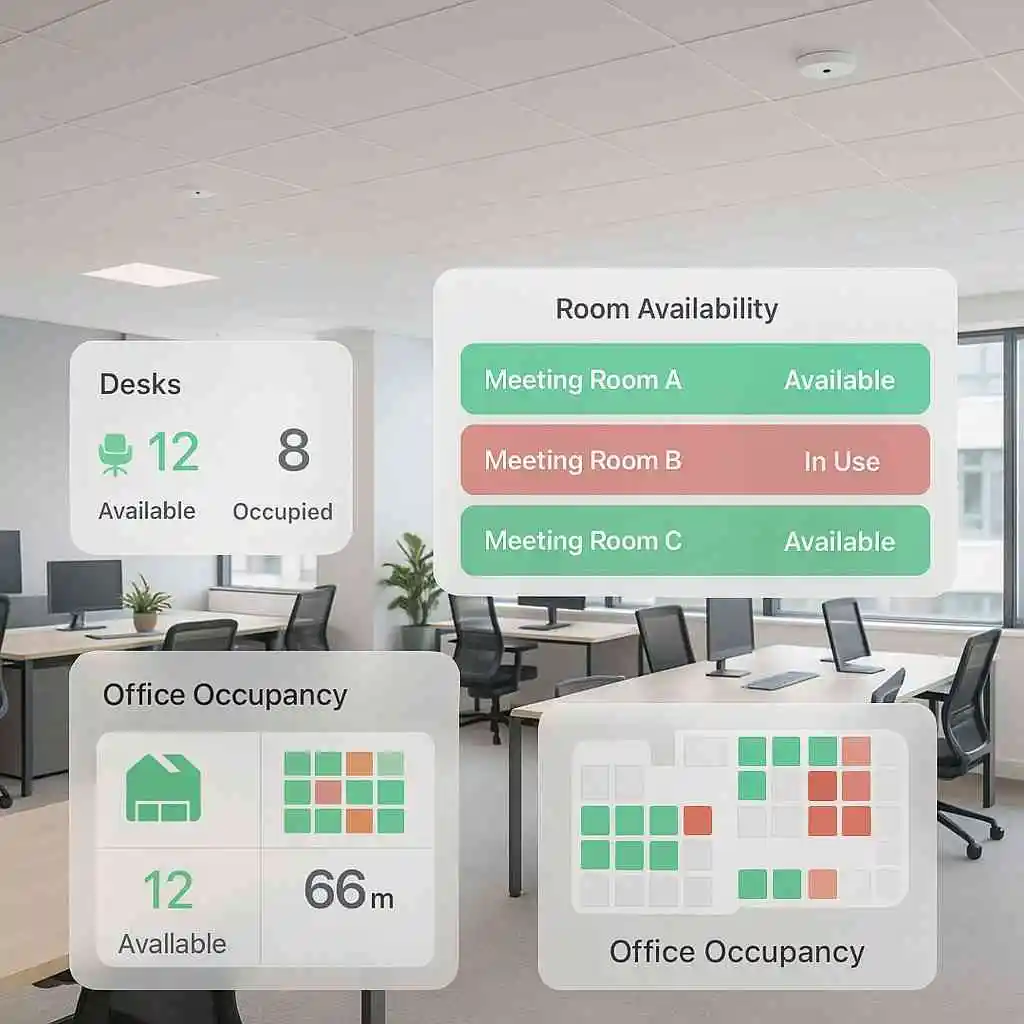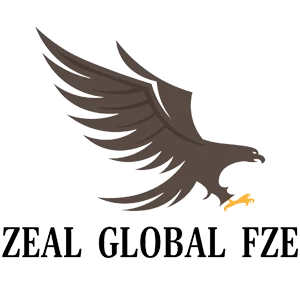From Chaos to Clarity: How to Build a Smarter, Tech-Driven Workspace
From AI-powered scheduling and hot desking to video conferencing and smart climate control, these technologies create intuitive, efficient spaces that adapt to modern workstyles.As employee expectations rise – especially among tech-savvy generations – organizations that invest in smart workplace solutions are gaining a competitive edge. It’s not just about adopting gadgets; it’s about transforming the way people work. In this blog, we’ll guide you through the essentials of building a smarter, tech-driven workspace – from the core technologies to strategies that bring clarity and productivity to your modern office.
What Is a Smart Workplace?
A smart workplace is a modern, technology-enabled environment designed to help employees work more efficiently, collaboratively, and comfortably. It integrates digital tools, systems, and devices – often working seamlessly in the background – to automate tasks, manage resources, and improve daily workflows.
Key Characteristics of a Smart Workplace

Automation & AI
Smart workplaces use automation & AI to handle routine tasks like scheduling meetings, to managing visitor check-ins. Tools such as AI-powered assistants can even summarize meetings or suggest productivity tips.

IoT Integration
Internet of Things (IoT) devices, like occupancy sensors, smart lighting, and climate control systems optimize space usage and thus improve workspace comfort by adjusting settings based on real-time data.

Better Collaboration
With integrated platforms like Microsoft Teams, Zoom, & interactive whiteboards, employees can collaborate from anywhere-office or remote workspace.

Flexible Workspaces
Hot desking and room booking systems let employees reserve workspaces on demand, supporting hybrid work and better space utilization.
At its core, a smart workplace aims to boost productivity, collaboration, efficiency, and flexibility—all while creating a smooth and engaging work experience for employees and visitors alike.

Why Your Business Needs a Smart Workspace?
Improved Employee Productivity
Automated workflows and smart environments (lighting, temperature) minimize distractions, letting employees focus on impactful tasks and stay motivated.
Enhanced Hybrid Collaboration
Video conferencing tools and interactive displays bridge gaps between remote and in-office teams for seamless communication.
Optimized Office Real Estate
Data from occupancy sensors and hot desking apps maximizes space efficiency, reducing costs in hybrid setups.
Elevated Visitor & Employee Experience
Digital check-ins and smart amenities streamline access, impressing guests and boosting staff satisfaction.
Attract Tech-Savvy Talent
Modern tools like AI and IoT signal innovation, appealing to talent seeking cutting-edge workplaces.
The Pillars of a Smart Workspace (Core Features to Implement)

Seamless Collaboration Technologies
Tools: Video conferencing systems (Zoom, Microsoft Teams), enterprise-grade speakerphones, interactive displays (smart whiteboards, 4K projectors).
Use Cases: Huddle rooms for quick meetings, training rooms with screen-sharing capabilities, BYOM (Bring Your Own Meeting) setups for instant device connectivity.
Why It Matters: BYOM flexibility allows employees to connect laptops or smartphones to room systems wirelessly, ensuring smooth hybrid meetings. High-quality audio/video tools prevent communication gaps, while interactive displays enable real-time brainstorming.
Workspace Booking & Occupancy Management
Tools: Desk/room booking apps, IoT occupancy sensors, capacity dashboards.
Use Cases: Hot desking for flexible seating, optimizing underused spaces, enforcing health/safety limits via real-time occupancy data.
Why It Matters: Sensors track space usage to eliminate wasted real estate, while booking systems let employees reserve desks or rooms in advance. Data-driven insights help redesign layouts for hybrid work efficiency.


Security and Visitor Management Systems
Use Cases: Automated access permissions for employees/guests, pre-visit health screenings, digital NDA signing.
Why It Matters: Secure, touchless check-ins reduce front-desk bottlenecks and protect sensitive areas. Integrated systems ensure compliance and prevent unauthorized access, while aligning with modern health protocols.
Smart Environment and Comfort Tools
Use Cases: Personalized workspace settings (e.g., temperature presets), automated energy savings, posture reminders via smart furniture.
Why It Matters: Ambient controls boost focus and well-being, while adaptive furniture reduces fatigue. Air quality monitoring ensures healthier workspaces, improving productivity and reducing absenteeism.

Implementation Strategies: How to Build a Smarter Workspace
1. Assess Your Current Environment and Pain Points
- Audit existing workflows, tools, and space usage to identify inefficiencies (e.g., underused meeting rooms, outdated tech).
- Gather employee feedback via surveys to pinpoint collaboration hurdles or tech gaps.
- Use data from occupancy sensors or project management platforms to uncover bottlenecks.
2. Define Digital Workplace Goals Aligned with Business Strategy
- Prioritize objectives like boosting hybrid collaboration, cutting real estate costs, or improving employee retention.
- Align smart office tools (e.g., BYOM setups) with goals to streamline hybrid meetings.
- Use IoT sensors to optimize space for cost savings.
3. Choose the Right Tech Stack
Software:
- Collaboration: Zoom Rooms, Microsoft Teams, cloud-based ERP systems (e.g., SAP).
- Management: Desk booking apps (e.g., Robin), project tools (Asana, Trello).
Hardware:
- AI cameras, smart projectors, interactive whiteboards.
- IoT devices (occupancy sensors, air quality monitors).
4. Train Employees to Adapt to New Tech
- Offer role-specific workshops (e.g., using interactive displays for creatives, ERP navigation for managers).
- Provide bite-sized tutorials for multigenerational teams and ongoing IT support.
- Gamify adoption (e.g., rewards for mastering tools).
5. Create Governance and Security Policies
- Restrict data access via smart badges or role-based permissions.
- Encrypt sensitive data and integrate cybersecurity tools (e.g., AI threat detection).
- Ensure compliance with regulations (GDPR, HIPAA) through regular audits.
6. Measure, Iterate, and Improve
- Track KPIs like room utilization rates, employee productivity metrics, and tech adoption rates.
- Use analytics dashboards (e.g., Power BI) to spot trends.
- Refine strategies based on feedback—for example, redesigning meeting room layouts if sensors show low desk usage.
Challenges and How to Overcome Them
1. Budget Considerations & ROI Mindset
Problem: High upfront costs for smart tech can deter investment.
Solution: Start with pilot programs (e.g., test video conferencing tools in one department) to prove ROI quickly. Phase in tools based on priority—focus on high-impact areas like collaboration tools first.
2. Initial Learning Curve
Problem: Employees may resist new systems, slowing adoption.
Solution: Partner with experts like Zeal Global to deliver tailored staff training programs, including bite-sized tutorials and “tech champions.” Gamify learning with rewards for early adopters.
3. Integration Complexity
Problem: Mixing old and new systems can create technical chaos.
Solution: Partner with vendors like Zeal Global , which offer seamless API integration and dedicated support. Phase out legacy tools gradually and prioritize interoperable platforms.
Conclusion
A smart workplace isn’t just a trend—it’s a strategic advantage in today’s hybrid era. By integrating collaboration tools, optimizing space with data, and prioritizing employee well-being, businesses unlock productivity, reduce costs, and attract top talent.
But transitioning from chaos to clarity isn’t a one-time fix. It’s an ongoing journey of adaptation. As technology evolves, so must your workspace—refining tools, training teams, and leveraging analytics to stay ahead.
Ready to begin? Start small with pilot programs (like upgrading meeting rooms or testing desk booking apps) and scale strategically. Partner with experts like Zeal Global to streamline integration and training.
Your smarter workplace starts today—build it to thrive tomorrow.


